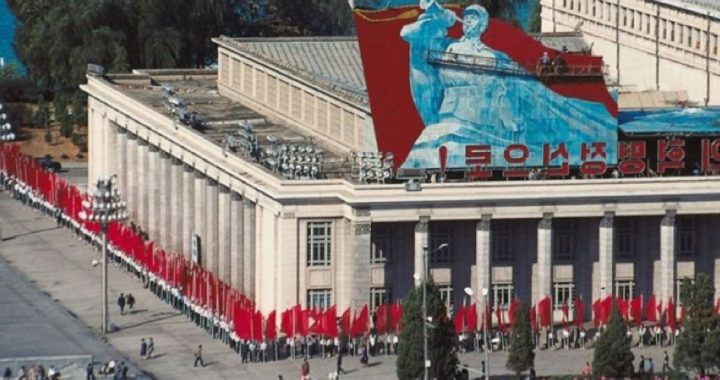
North Korea is one of the most miserable places on the planet. When the Korean peninsula was divided into a communist north and a free south at the end of the Second World War, North Korea was the richer half of the peninsula. It had most of the industrialization, most of the mineral wealth, and most of the population. Seven decades of communism has changed all that. Today, when South Koreans send 200,000 balloons criticizing the communist government of the North, the response from the North is to threaten a full-scale war.
The balloons that fly over the 38th parallel and into North Korea do have propaganda messages, but these balloons also carry things more incriminating of their government: rice, clothing, medicines, and American currency — things desperately needed by the subjects of the North Korean communists and in constant short supply.
This is not the first time that humanitarian aid, along with messages of support, has been sent to the North Korean people. In early 2011, a similar release of balloons was made and the North Koreans reacted with the same bombast and threats. It is a testament to the abject poverty of the North Korean people that not only did the rice, medicine, and clothing have value to them, but also the balloons themselves.
Pak Sang-hak, who escaped from North Korea 12 years ago and who lives in the south today, said that communist threats do not trouble him: “We had similar threats last year and they did not stop us before and this is not going to stop us this time.” Pak belongs to a group of refugees from North Korean communism who hope to incite their former countrymen into revolution, an organization called Fighters for a Free North Korea.
At the time, Pak said: “North Korea has said they would fire surgical strikes at those of us sending up balloons, so this highly allergic reaction clearly shows what we’re doing is working.”
The balloons are not being sent by the government of South Korea, but by a group of private organizations and individuals, largely evangelical Christians and anti-communists. But the response of North Korea has been to threaten the whole of South Korea, saying that it will attack with merciless artillery and missile strikes against South Korea.
In a similar manner, Christian groups in South Korea have been sending Bibles into North Korea, in what has been called “Operation Dandelion,” for a couple of decades, as one member, Peter, noted:
We started this project back in 1991, and just as a dandelion needs the wind to spread its seeds, we need the wind to spread the message. It’s almost impossible to get Bibles into North Korea, so using balloons is one of the most effective ways to share the gospel.
Another member of the group said: “By sending these balloons, we let our North Korean brothers and sisters know that we are praying for them and the scriptures on the balloons are meant to encourage them.”
At least one North Korean refugee, 47-year-old Lee Ju-sung, was actually inspired to leave North Korea because of the messages he found in balloons from the south. Now he is sending his own balloons to the North Koreans he left behind. And because he knows what material deprivations are happening in North Korea, his balloons have their own cargo: “Warm socks are a critical necessity in North Korea during the winter months — almost as much as food. One pair of socks cost the equivalent of $9 in North Korea. That same amount could buy 20 pounds of corn, enough to feed a person for an entire month.” He has so far sent 50,000 pairs of socks to North Korea and his goal is to send at least 1,000 per month until his homeland is free.
Notwithstanding its verbal bombast after being deluged by gift-laden balloons, North Korea has long waged a propaganda war against South Korea, using radio broadcasts and other methods to persuade South Koreans that their government is corrupt, that the standard of living in North Korea is high, and that the people under communist rule are happy. No one in South Korea takes that seriously, however. Hundreds of thousands of North Koreans have risked everything for a chance to begin in poverty in South Korea. These people uniformly describe a world of pure horror in North Korea. Much of the nation works under terrible conditions, as virtual slave laborers; and hunger, and sometimes outright starvation, is a constant companion.
North Korea and South Korea are technically still at war — only an armistice was agreed to when the fighting stopped in Korea 60 years ago. In those 60 years, South Korea’s economy has grown dramatically, and it is the 15th largest economy in the world and the 4th largest one in Asia, with a GDP of $1.1 trillion.
The North Korean economy is tiny, with an estimated GDP of $45 billion, or only four percent the size of the nation that it is threatening today. As much as anything, the balloons with rice, socks, clothing, and medicine demonstrate to the subjects of North Korea that the communist government has utterly failed in its goal of establishing a Worker’s Paradise.



